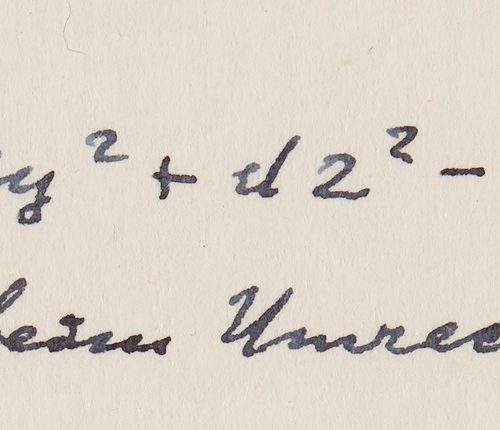The classic Italian dish known as cacio e pepe only requires three primary ingredients, but achieving its celebrated, creamy consistency is notoriously difficult. Researchers at Germany’s Max Planck Institute for the Physics of Complex Systems even go so far as to describe the dish as possessing “problematic aspects” requiring “extra care” in their Soft Condensed Matter preprint study. But thanks to recent analysis using a physics concept called phase separation, the team believes they have achieved a “scientifically optimized recipe” for cacio e pepe. And it’s one anyone can use in their own kitchen.
Cacio e pepe (“cheese and pepper”) originated in the Lazio region of central Italy during the 18th or 19th century. The meal likely came from shepherds living in the area, whose long distance travels required them to pack ingredients that were both shelf stable and calorically dense. Cacio e pepe in its most basic form needs just three components—pecorino cheese, black pepper, and spaghetti pasta—but the complications arrive in its preparation. After boiling the pasta, a hungry cook must then mix just the right amount of grated pecorino into some of the leftover pasta water. The resultant cream sauce can then be poured over the noodles, garnished with the ground pepper, and enjoyed.
[ Related: Scientists figured out the optimal cup of coffee. ]
But there’s a catch: if the water is too hot, or if the correct ratio of cheese-to-starch isn’t achieved, then the cacio e pepe sauce turns into a thin liquid filled with congealed globs of curds. Physicists led by Italian-born Ivan Di Terlizzi designated this undesirable outcome the “Mozzeralla Phase” that results from “extreme protein aggregation upon heating.” Given how varied cheese-to-starch ratio can be, this means many-a-ruined cacio e pepe over the years have found their way into trashcans instead of onto plates.
Di Terlizzi and his colleagues wanted to end this centuries-old culinary frustration. The team experimented with hundreds of recipe iterations using different amounts of ingredients. After blending varying proportions of cheese, starch, and water, they then heated each version in a pan using a warm water bath method known as a sous vide cooker. After each mixture reached a designated temperature between 122-203 degrees Fahrenheit, the researchers next photographed a sample placed on a Petri dish. They then arranged these pictures into what’s known as a phase diagram—a way to help chart a subject’s potential states depending on changes in various conditions. In the case of cacio e pepe, these included factors such as temperature and starch level.
[ Related: How to fix common cooking mistakes. ]
Di Terlizzi identified a clear relation between the sauce’s protein level and its temperature when its overall starch level remained constant—one that formed a U-shaped curve when graphed. Both extremely low and high levels of the pecorino-derived protein avoided the Mozzarella Phase at a higher minimum temperature. According to researchers, this means that cacio e pepe’s starch concentration is “the key factor influencing sauce stability.” More specifically, a creamy sauce requires a starch level of 2-3 percent.
But, for practical purposes, there was a problem—one that may help explain why making cacio e pepe can be so frustrating: pasta water usually only retains a starch level of about one percent after cooking. Luckily, the physicists found a simple solution. To remedy the issue researchers used a tried-and-true shortcut: cornstarch.
And so, without further ado, here is the Di Terlizzi team’s “scientifically optimized recipe” for a “consistently flawless execution” of cacio e pepe:
For two servings:
- Pasta (240 g)
- Pecorino cheese (160 g)
- Cornstarch (4 g)
- Water (40 mL)
- Whole black peppercorns, to taste
Toast peppercorns in a pan until fragrant, then grind them. Mix cornstarch into water while heating until it forms a gel. After the gel cools, combine with pecorino and desired amount of ground black pepper in a blender. Boil pasta, then reserve some of the starchy water before draining it. Mix pasta into the source, adding the pasta water as needed until desired consistency is reached.
But nothing is ever perfect in the culinary world. Although confident of their “scientifically optimized” cacio e pepe, the physicists note in their study that future investigations could explore the relationship between starch and sauce viscosity, as well as the “potential role of peppercorns… as aggregation nuclei.” Until then, buon appetito.






